Corner Market Building (1912)
Introduction
Text-to-speech Audio
Completed in 1912, the Corner Market Building is one of several buildings within Seattle's Pike Place Market and was designed by the architect Harlan Thomas. The market was established on the waterfront in 1907, and from its inception, it drew numerous customers seeking reasonable prices for fresh, local goods while directly connecting farmers with consumers. By the 1970s, however, the market struggled to compete with supermarkets in the suburbs accessible by automobile. The Corner Market Building was crumbling into disrepair until a group of community-minded preservationists fought to save it. In 1970, the Corner Market Building was listed on the National Register of Historic Places as a contributing structure to the Pike Place Market Historic District, and in 1975, it was renovated and restored to its original appearance.
Images
Seattle's Corner Market Building
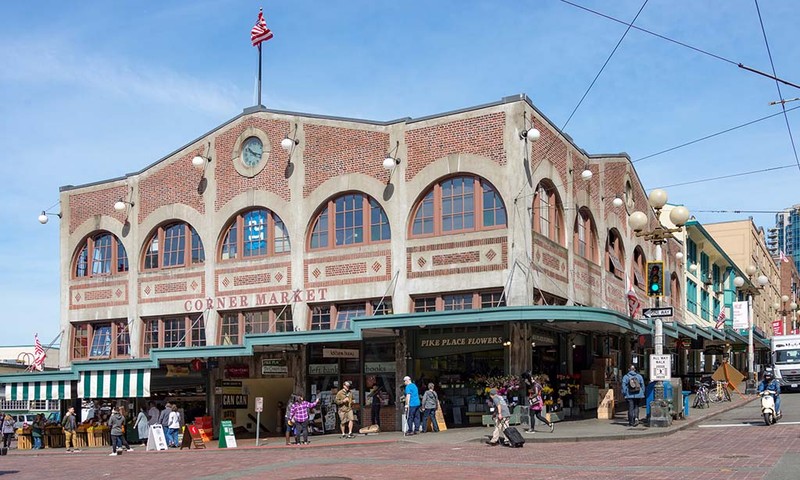
Corner Market Building, built in 1912
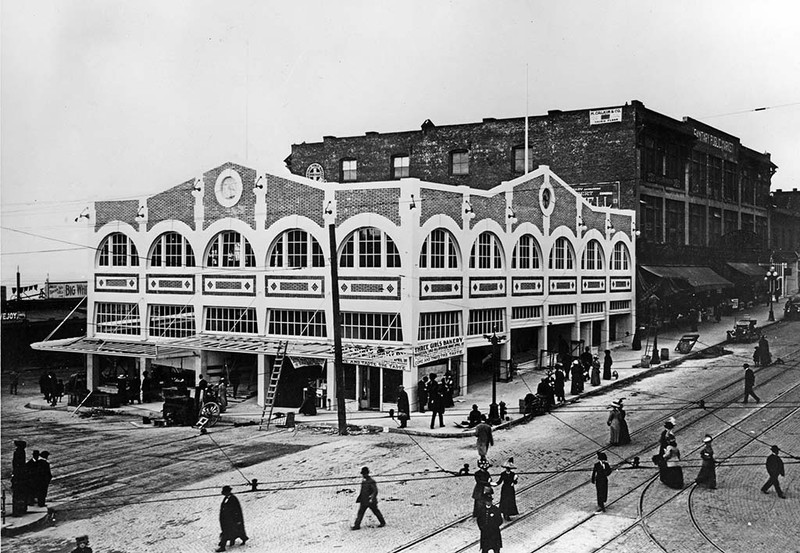
Corner Market Building, circa 1915
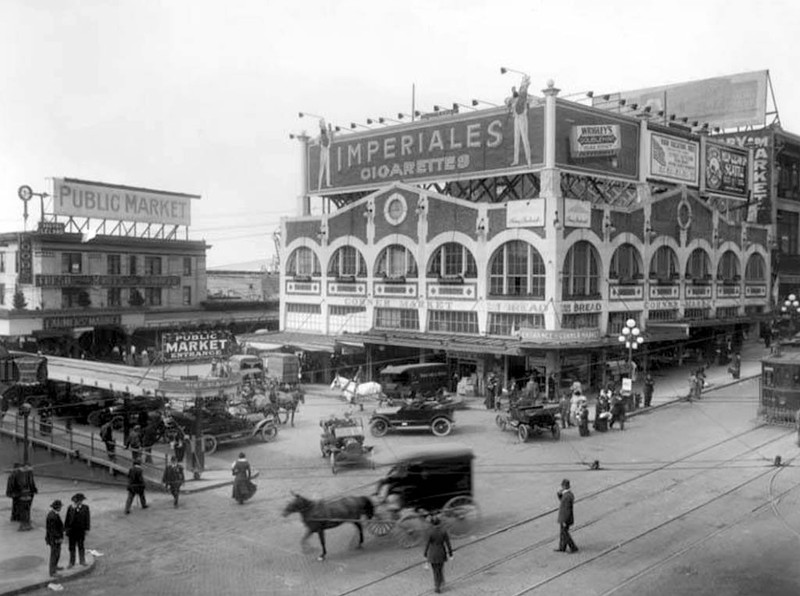
Corner Market Building, shortly prior to restoration, 1975
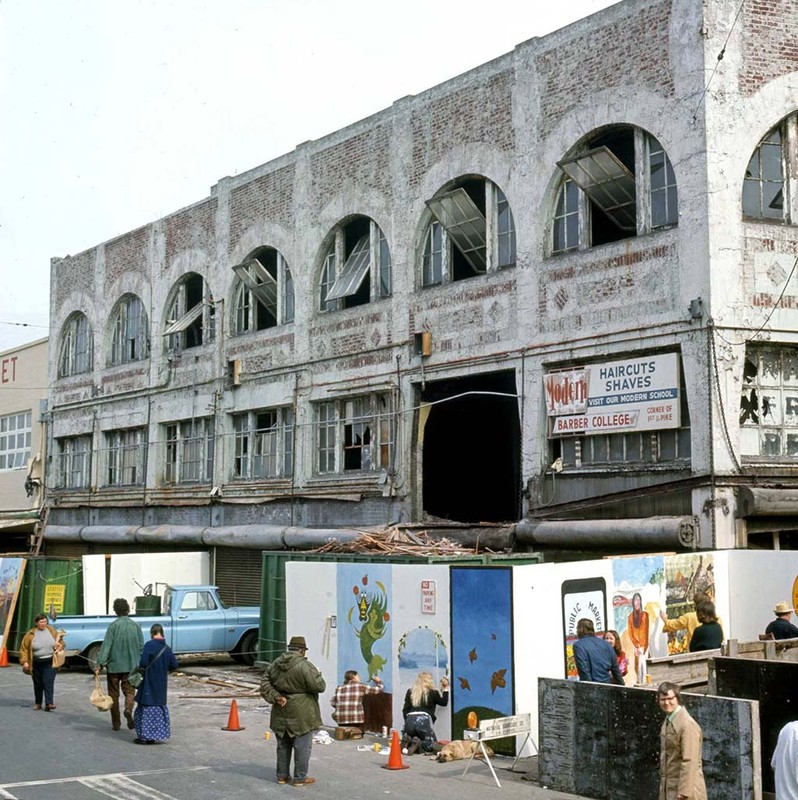
Corner Market Building, interior renovation, 1975
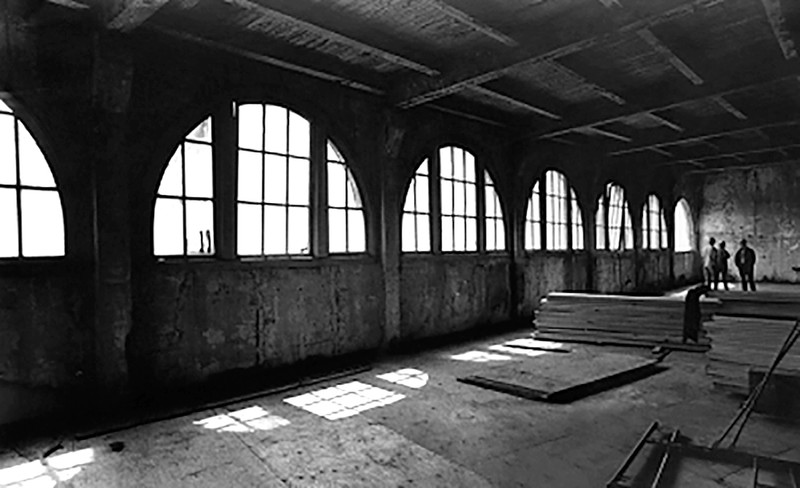
Backstory and Context
Text-to-speech Audio
In 1911, the Corner Market Building was commissioned by Cyrus Francis Clapp, who hired the architect Harlan Thomas to design the building across from Pike Place Market, which was established near Seattle's waterfront in 1907. Its success led private property owners to commission new buildings nearby, expanding the market with an increasing number of vendor stalls and social amenities for shoppers. The Corner Market Building offered foods such as butter, cheese, eggs, coffee, tea, and spices, with specialty retailers that included “two confectioners; three delicatessens; a fish and oyster dealer; a florist; [and] three fruit sellers.” By the 1920s, Pike Place Market had become a primary regional food center, with many people coming into the city to purchase fresh produce and other goods. The market was a boon for Seattle and for the region’s farmers who could connect more directly with customers and avoid price-gouging by middle men.
During the 1920s, the Pike Place Market reflected a mix of farmers, food vendors, and other merchants who had come to the Pacific Northwest during the waves of Asian and European immigration since 1900. The customers who frequented the market also reflected the ethnic and economic diversity of the city. As many as 25,000 shoppers visited the market during an average weekday. Amidst the Great Depression in the 1930s, the market served a particularly important role by providing a reliable source of low-cost foods and amenities. During World War II, however, the federal policies that forced Japanese Americans to evacuate the city and move into internment camps had a lasting negative impact on the market. Even in the decade after war, the market never completely recovered due to the loss of farmers, customers, and sales.
By the 1950s, the market's buildings had begun to show signs of disrepair, as its shopping base declined. The rise of suburban supermarkets, accessible by automobile, further contributed to the economic downturn, which continued throughout the 1960s. Still, the Pike Place Market remained a hub for local residents, especially those who were elderly or low-income. With its bright neon signage (added in 1937) it also remained popular with tourists visiting the city. In 1963, an urban renewal project was proposed which threatened to demolish the entire market complex, including the Corner Market Building, replacing it instead with high-rise apartments. In response, a group of community-minded preservationists, the Friends of the Market, came together to save the site from demolition. They launched a painstaking, seven-year battle to prevent re-development.
The Friends of the Market succeeded, launching a sustained grassroots effort that involved the collection of 16,000 signatures. They put forward a public initiative, Petition No. 270105, to establish a protected historic district that would be overseen by a new local commission. A majority of Seattle residents approved the petition, voting to preserve the historic character of the Pike Place Market and its surrounding buildings. A modified urban renewal plan was adopted that involved preserving the buildings and repaving the historic cobblestone streets. In 1970, the Market and several contributing structures, including the Corner Market Building, were listed on the National Register of Historic Places as the Pike Place Market Historic District. In 1975, the Corner Market Building was fully renovated, preserving its historic character while restoring it to its original appearance.
Sources
Dorpat, Paul. "Corner Market", HistoryLink. Accessed August 15th, 2023. https://historylink.tours/stop/corner-market/.
Dorpat, Paul. "Seattle Now and Then: The Pike Place Market Building", Seattle Now and Then. May 31st, 2014. Accessed August 15th, 2023. https://pauldorpat.com/2014/05/31/seattle-now-then-the-pike-place-market-building/.
"Pike Place Market Historic District: Nomination Form, National Register of Historic Places", National Archives. June 2nd, 2011. Accessed August 15th, 2023. https://catalog.archives.gov/id/75612297.
"Public Market Center, Pike Place Market, Corner Market Building, Seattle, WA (1911-1912)", PCAD. Accessed August 15th, 2023. https://pcad.lib.washington.edu/building/9444/.
HistoryLink / Photo by Xiquinho Silva (CC BY 2.0)
Courtesy of Seattle Municipal Archives / HistoryLink
Museum of Culture and Industry
Photograph by Paul Dorpat / HistoryLink
Courtesy of Seattle Municipal Archives / HistoryLink
